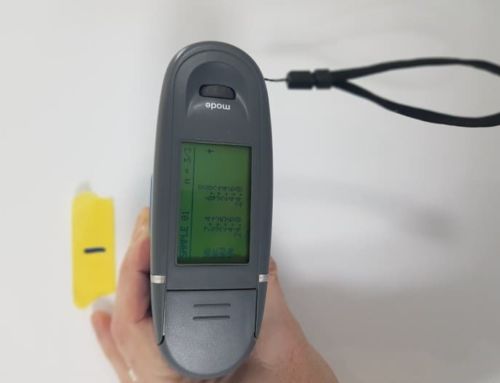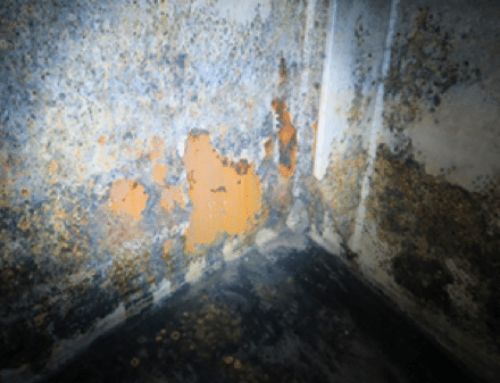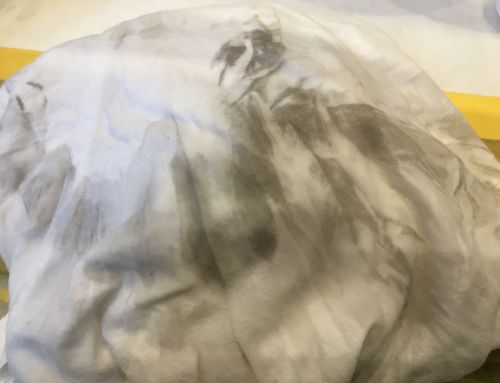This is the final and last part in a two part series about superyacht tank coatings. Click here for part 1.
SPECIFICATIONS AND PROCEDURES
When coating types have been specified and related stipulations are assessed the next step will be the preparation of a specification. A specification comprises the elements which are necessary to describe the result aimed at. All of the considerations that need to be addressed and the standards required have to be described clearly. Reference should also be made to the manufacturer’s instructions.
A specification should minimally describe:
- surface preparation requirements
- cleanliness requirements
- surface profile requirements
- max allowable concentration of chloride on the steel surfaces
- paint materials
- solids by volume
- type and amount of thinner
- recommended or specified dry film thickness (DFT)
- minimum and maximum DFT
- theoretical coverage at a stated DFT
- potlife (for two-component materials) at different temperatures
- shelf life and storage instructions
- drying and curing times at different temperatures
- recoating interval times at different temperatures
- environmental restrictions
- substrate temperature restrictions
- ventilation requirements (especially for confined spaces)
- equipment requirements for spray, brush, and roller application
- touch-up and repair procedures
- health, safety and environmental protection instructions
Depending on the type and the use of the system, more details could or should be added to this list. But even when all these details are mentioned in the manufacturer’s literature, it is a good habit to arrange for a kick-off meeting in which the application details are reviewed and the inspection procedures and standards are set.
It is already common practice that well organized subcontractors provide detailed work procedures and a time schedule. At a minimum, the coating work procedures should provide a means by which the coatings work can be safely and properly executed. The procedure should address all special requirements for a particular application.
Certain significant elements should be addressed as a minimum in a good work procedure:
- Scope
- Safety
- Waste Control/disposal
- Materials
- Materials handling and storage
- Equipment
- Training, qualification and certification
- Environmental requirements and control
- Surface condition and preparation
- Thinning, mixing, applying materials
- Ventilation plan
- Drying/curing
- Inspection/testing
- Remedial work
- Documentation
The amount of detail used in the procedure to address each of these elements will vary according to the specific job. In some cases, it is enough to have a simple reference to the specifications, the contract, regulatory requirements, governing standards (from ISO, CEN, SSPC, NACE, or ASTM) or to be referred to the manufacturer’s instructions.
STEEL DRESSING
Before starting the actual surface preparation the tank surfaces need to be assessed for presence of steel imperfections. Steel imperfections will have a negative influence on performance and lifetime expectancy of the tank coating. In general, the following steel imperfections need to be addressed:
- Weld spatters
- Sharp edges
- Laminations/silvers
- Undercuts next to welds
- Rough manual weld seams
- Pores/pinholes in welds
- Areas not accessible for proper coating and application
Steel dressing will be carried out in order to achieve a suitable steel surface to which a closed paint film can be applied so that the paint system will perform as required. Reference is made to the European standard ISO 8501-3, Preparation of steel substrates before application of paints and related products – Visual assessment of surface cleanliness -Part 3: Preparation grades of welds, edges and other areas with surface imperfections (ISO 8501-3:2006):
- All steel structures in tanks or exterior surfaces will be fully welded in order to avoid cracking of the coating system.
- Steel defects as defined in ISO 8501-3 will be repaired before coating.
- All scallops/mouse holes will have dimensions and shape allowing proper treatment for painting.
GENERAL CONDITIONS
Lighting
Lighting in the tank must be sufficient and homogeneous without shadows on all surfaces where work is to take place. In general a minimum of 500 lux is recommended. This should be combined with low voltage hand lamps for illumination during blasting, cleaning, stripe coating and inspection.
Ventilation, heating and dehumidification
Sufficient ventilation, heating and dehumidification equipment shall be provided so that at all stages, i.e. grit blasting, paint application and curing, ideal conditions in the tank are maintained:
- Before blasting the ventilation and heating equipment must be installed and working to enable that he specified air humidity and temperature is established. The tank must be kept in a condensation free condition.
- The steel temperature must be above the recommendation in the respective product data sheet, and at least 3°C above the dew point.
- During grit blasting and application of the system the relative humidity must be below 80% (quality of blast standards will be maintained for longer periods when humidity is approximately 40% RH under relevant practical conditions and never exceeding a value of 50% RH).
- During application and curing of the final coat of paint and touch-up, the tank must be maintained in a well-ventilated, condensation free condition, in accordance with product data sheet information.
- All ventilation ducting must be arranged to give maximum efficiency and a slight overpressure in the tank has to be maintained.
- Rain shelters must be erected in way of tank coamings and tank cleaning apertures to prevent ingress of rain, dust and other contaminants.
- In cold conditions it may be necessary to partially insulate the outside of the tank to keep the minimum required steel temperature (for minimum curing temperature see product data sheet). This depending on; outside temperature – capacity of dehumidifier and heater.
SURFACE PREPARATION
Foreign Matters/Contaminations
During storage and construction, shop primed plates and frames are exposed to all kinds of foreign matter and become contaminated. Depending on the type and degree of contamination this needs to be removed before surface preparation can commence. Surface preparation methods like grit blasting or grinding will not remove these contaminations adequately and leave a percentage behind on the surface.
Typical contaminations are:
- Oil and grease
- Non-compatible paint pen markings and weld smoke residues
- Salt and other water-soluble contaminations
Manual local degreasing will be carried out according standard SSPC SP1 “Solvent Cleaning”.
There are various detection and inspection methods for the presence of the different types of contaminants. Oil, grease, pen marks and weld smoke can be detected visually.
Determination of salts and/or other water soluble foreign matters is done by means of the Bresle method according to ISO standard 8502-6. Other additional specific test methods for determination of surface cleanliness are mentioned in ISO standards 8502 part 1 to 9. Maximum allowed concentration will be indicated in writing for each different system in relation to the respective area.
Adhesion
A good performance of any coating system is directly related to an optimum adhesion of the coating to the substrate. This adhesion is dependent on the generic type of the coating, the formulation, but in particular on the quality of the surface preparation. The required surface preparation is specified on the technical data sheet of the selected coating materials.
Such specification typically calls for:
- A minimum degree of cleanliness
- A minimum surface profile
Cleanliness
Cleanliness of surface can be achieved in several ways. Most commonly used is hand power-tool cleaning and grit blasting. There is a direct relation between the lifetime expectancy of the coating system and the surface preparation method. In general we can say the better (cleaner) the surface preparation the longer the applied coating system will last. When cleaning a tank surface by means of hand power tool cleaning till grade PSt 2 or 3, lifetime expectancy of the applied coating system can be as short as four to five years.
Preparing the system surface by means of grit blasting till grade Sa 2½ or 3 with proper roughness will give life time expectancy from 10 up to 15 years, before complete repair is necessary. Given above mentioned difference in life time expectancy it is clear that grit blasting is by far the preferred method to clean surfaces for paint application, especially for new building.
Potable water tanks, grey water tanks, black water tanks and ballast water tanks will be blasted in accordance with ISO 8501-1. Immediately prior to painting, the minimum acceptable standard will be Sa 2½. This includes the complete removal of (weldable) prefabrication primer. Depending on the specified paint system, technical fresh water tanks, cooling water tanks etc. will be blasted ISO 8501-2, P Sa 2½. All scallop edges, mouse holes and internal surfaces and return edges are to be taken into account.
How to Measure Cleanliness
Surface preparation cleanliness grades for hand power tool cleaning and grit blasting have been standardized: in Europe mainly the ISO 8501-1 standard is used an in USA the steel Structure Painting Council (SSPC) and or the NACE standard. Although all standards are different they are inter-changeable.The ISO 8501-1 is a visual assessment of surface cleanliness for steel substrates before application of paints which includes 28 representative photographic examples. The standard identifies four levels (designated as “rust grades”) of mill scale and rust that are commonly found on surfaces of uncoated erected steel and steel held in stock. It also identifies degrees of visual cleanliness (designated as “preparation grades”) after surface preparation of uncoated steel surfaces and steel after removal of any previous coating. The various grades are defined by written descriptions together with photographs that are representative examples within the tolerance for each grade as described in words.
For grit blasting following grades are applicable:
Sa 21/2 is most commonly used and cost effective.
Minimum Surface Profile
In order to achieve proper adhesion to steel surface most tank coating products require a minimum surface profile (‘roughness’), which is mentioned in most manufacturer product data sheets. If no profile is mentioned and could be provided we normally recommend the Rz value of 50-75 microns. Rz is the average of 5 maximum height measurements.
There is a relation between coating system thickness and required surface roughness. When the surface profile is low or non-existent, adhesion of the applied coats is low; if the surface profile is high, thicker coating layers can be applied without adhesion failure. The surface has been enlarged and the coating has a larger surface to adhere to. Equally important for adhesion of the coating system is proper density of the roughness. The achieved roughness must be present in high density over total surface to make sure enlargement of the surface is maximum.
How to Measure Surface Profile
Methods for determination of surface profile after grit blasting can be categorized in two main groups, measuring and comparator methods. Several different methods are available and standardized. Some of the most commonly used in the field are:
- Comparator method Rugotest Nr. 3 conform NF/E05 – 051 and ISO/DIS2632
- Comparator method according ISO 8503/1
- easuring method according NACE 0287 using replica tape, also known as Testex Press-O-film method
APPLICATION
Items assembled by bolts shall be dismounted before surface preparation commences. Before mounting the inaccessible areas such as (but not limited to) couplings, pipe supports, pipe clamps etc. shall be completely coated in accordance with the specification. If stainless steel bolts, clamps etc. will be used these items shall be insulated with Teflon rings and plates to avoid galvanic corrosion. Stripe coating shall be applied on all weld seams, edges, mouse holes, reverses, bolted items and other difficult to spray areas. The coating shall be applied in accordance with the specification and the manufacturer’s recommendations. The paint layer must be applied smoothly and in a dry film thickness as close to the specification as possible. The consumption of the paint shall be controlled and heavy layers should be avoided because of the risk of sags, cracks and stress. Wet film thickness measurements have to be carried out regularly to avoid significant deviations in thickness. If the lining will be built up with multiple coats each coat has to be applied in accordance with the specification. This means that each coat shall be visually inspected and the DFT has to be measured. Defects and deviations in DFT shall be rectified prior to commencation with the next coat. This process is very important in particularly when phenolic epoxy coatings are being used so as regularly in grey and black water tanks.
DRYING AND CURING
The drying and curing process is in general temperature dependant. In addition air movement is necessary to remove the evaporating solvents. Ventilation and climatic controlled environment is in this stage very important for the curing of the epoxy coating and to achieve the optimum level of chemical resistivity.
CONCLUSION
If the subject of tank coatings is not addressed properly the consequences can be quite serious. If premature failure occurs (blisters and corrosion) the owner faces an unexpected repair period where there’s every chance that holes have to be cut in the hull to obtain access to the tanks for blasting and coating application. But what exactly is “premature failure”? For the answer we may want to take a look at the commercial shipping industry. A 10-year lifespan of coating systems inside drinking and ballast water tanks without any major maintenance is not exceptional. In the superyacht industry however, it is not uncommon that tanks have to be re-blasted and recoated after only a few years (or even sooner).
To reiterate, properly specified coating materials and good surface preparation are very important factors for achieving good performance. Most importantly, however, is the professional application by a skilled and experienced contractor. Throughout the entire tank lining application process it is essential that meticulous quality control is instigated. Very thorough primary quality control on the part of the yard/subcontractor and secondary quality control on the part of the owner is vital. Supervision during the process and inspections afterwards are fundamental keys to the performance of a tank lining




